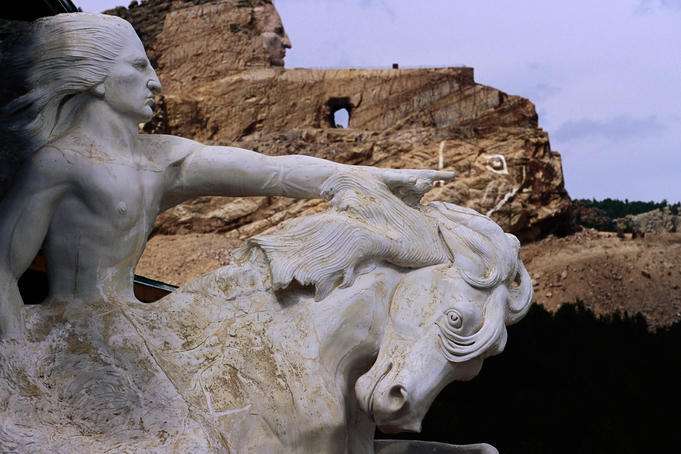|
|
Online Texts
|
|
|
Peter Blue Cloud (Mohawk, 1935-2011) Crazy Horse Monument (1988) |
|
Historical background: Crazy Horse (c. 1840-1877) was a war leader of the Oglala Lakota Sioux who led Sioux resistance to European-American encroachments on Sioux territory and commanded the successful Indian attack on General George Custer's troops in the Battle of Little Big Horn (June 1876). He was killed the following year by a military guard when he reportedly resisted being imprisoned in Nebraska.
The Crazy Horse Memorial (model above; other photos below poem) was begun in 1948 on Thunderhead Mountain in the Black Hills of South Dakota by Danish-American sculptor Korczak Ziolkowski, who was invited to develop the sculpture by a Lakota elder as a counterpart to the mountain sculpture of four U.S. Presidents at Mount Rushmore (also in South Dakota--see below). Since Ziolkowski's death in 1982, his wife Ruth and seven of their 10 children continue to work at the site, which is scheduled for completion in 2020.
American Indian attitudes toward the sculpture have been mixed. The poem below by Peter Blue Cloud sees stone sculpture as a tradition of the Western European civilization that conquered the American Indians, and suggests that a more suitable honor for the Indian past would be the maintenance of its own traditions, such as maintaining relationships between generations or the shaping of an arrowhead for hunting.
Possible discussion questions:
1. Crazy Horse has always been a symbol of American Indian resistance as opposed to assimilation. What vision of Crazy Horse does the poem create? If he does not live in sculpture, how does he continue to live or be remembered?
2. If American Indian culture is originally an oral-spoken rather than a written culture, how does this poem's style--rhythm, meter, chorus, etc.--evoke a ritual-like chant or incantation?
![]()
Crazy Horse Monument
Hailstones falling like
sharp blue sky chips
howling winds the brown
grass bends, while
buffalo paw and stamp and
blow billowing steam,
and prairie wolves chorus
the moon in morning. 4
The spotted snake of a
village on the move
a silent file of horses
rounding hills,
in a robe of gray, the sky
chief clutches thunder
and winter seeks to find
the strongest men.
8
Crazy Horse rides the
circle of his peopleís sleep,
from Little Big Horn
to Wounded Knee,
Black Hills, their
shadows are his only robe
dark breast feathers
of a future storm.
12
Those of broken bodies
piled in death, [possible allusion to Massacre of Sioux
at Wounded Knee]
of frozen blood upon the
white of snow,
yours is now the sky chant
of spirit making,
pacing the rhythm of Crazy
Horseís mount.
16
And he would cry in anger
of a single death,
and dare the guns of
mounted soldiers blue,
for his was the blood and
pulse of rivers,
and mountains and plains
taken in sacred trust. 20
Crazy Horse rides the
circle of his peopleís sleep,
from Little Big Horn
to Wounded Knee,
Black Hills, their
shadows are his only robe
dark breast feathers
of a future storm.
24
And what would he think of
the cold steel chisel,
and of dynamite blasting a
mountainís face,
what value the crumbled
glories of Greece and Rome,
to a people made cold and
hungry?
28
To capture in stone the
essence of a manís spirit,
to portray the love and
respect of children and elders,
fashion instead the point
of a hunting arrow sharp,
and leave to the elements
the wearing-down of time. 32
Crazy Horse rides the
circle of his peopleís sleep,
from Little Big Horn
to Wounded Knee,
Black Hills, their
shadows are his only robe
dark breast feathers
of a future storm.
36
Peter Blue Cloud (1935-2011) was a member of the Mohawk Nation at Akwesasne, a community straddling the US-Canadian border at the St. Lawrence River.
![]()
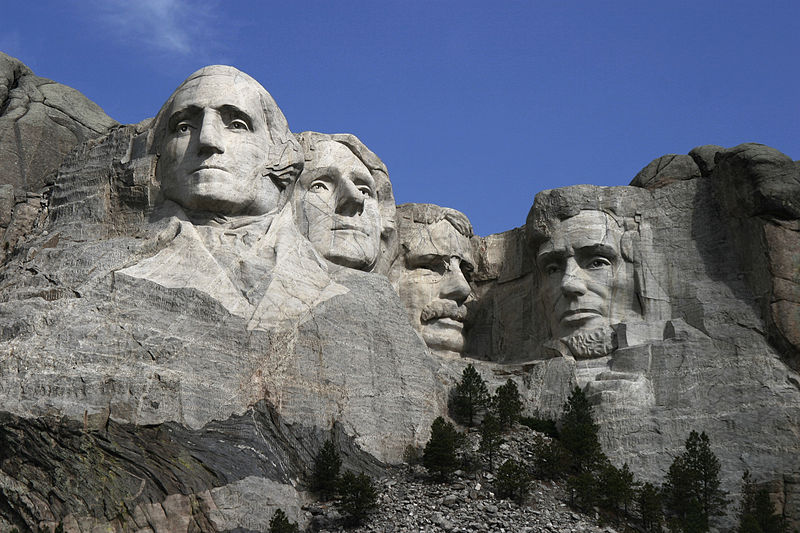
Mount Rushmore National Memorial, also in South Dakota,
developed 1927-41 by
Danish-American sculptor Gutzon Borglum and son Lincoln Borglum
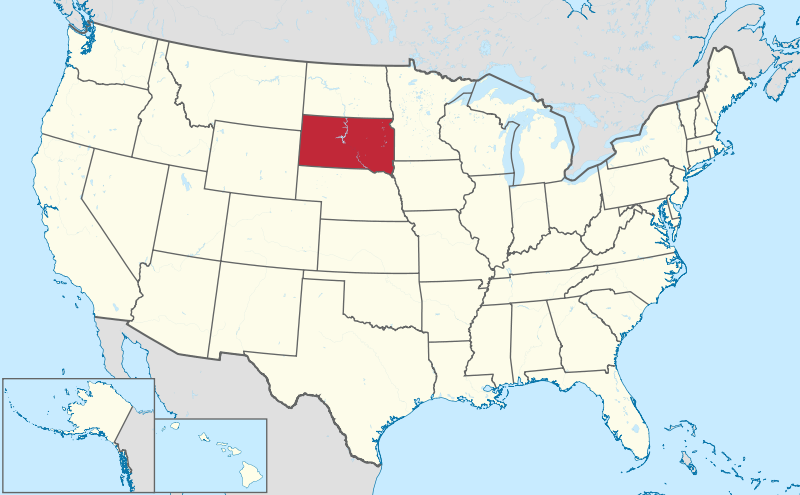
South Dakota location in USA
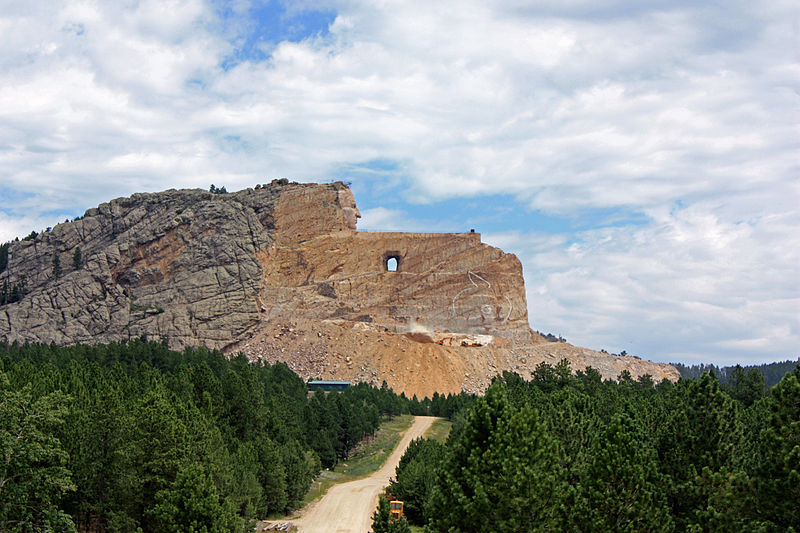
Distant view of Crazy Horse Memorial, 2010
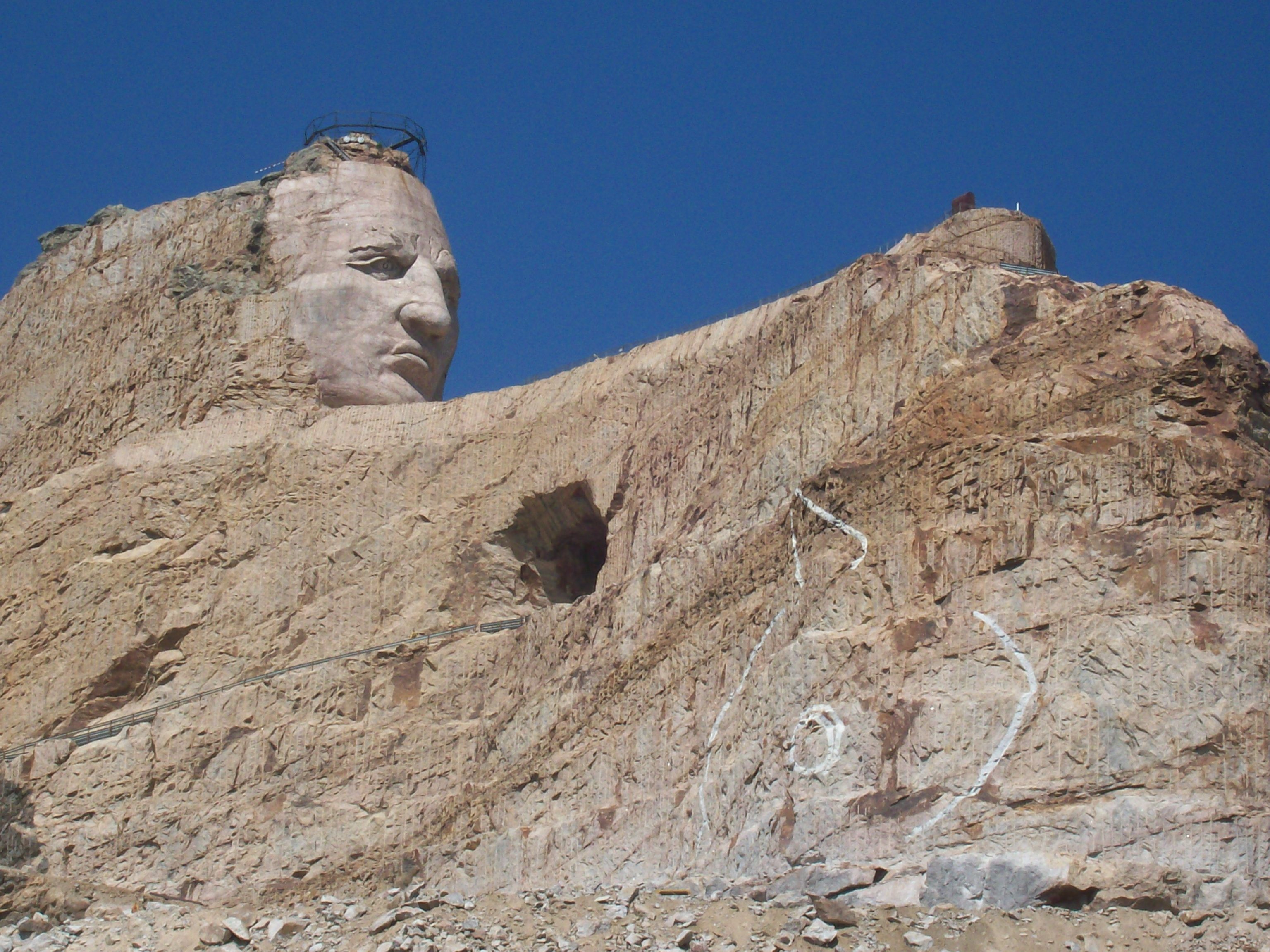
Near View of Face, Crazy Horse Memorial
Crazy Horse Memorial official site
Crazy Horse Memorial live web-cams
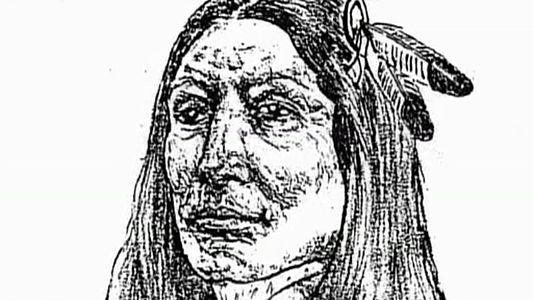
Sketch of Crazy Horse made in 1934 by Mormon missionary
after interviewing Crazy Horse's sister, who claimed the sketch
was
accurate. No known photographs of Crazy Horse exist.


